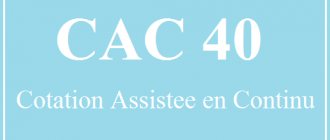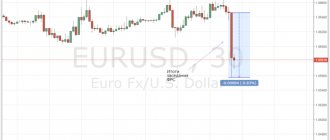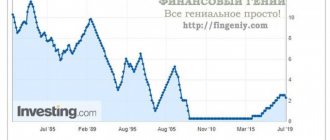Past meetings of Central Banks:
- December 19: The Fed does not refuse to raise rates, but will slow down
- December 14: Inflation forced the Bank of Russia to increase the interest rate
- December 13: The ECB's decision strengthened the euro, and Mario Draghi supported it
- November 29: The Fed minutes had no effect on the dollar exchange rate
Next meetings of Central Banks
- Bank of Russia,
- Fed,
- ECB,
- Bank of England,
- Bank of Japan,
- Bank of Switzerland,
- Bank of Canada,
- Bank of Australia (RBA),
- Reserve Bank of New Zealand (RBNZ).
Traders, speculators, investors and financiers are waiting for reports from meetings of the central banks of major countries. The level of interest rates determines the further dynamics of many areas of the country’s economic activity, as well as the interest of investors in the national currency and government securities. On this page you will find a calendar of meetings of Central Banks for 2021, as well as schedules for publishing reports on them.
ECB QE is nearing completion
The ECB Governing Council has confirmed that interest rates will remain at current levels until at least the end of summer 2021.
The end of the financial stimulus program is scheduled for the end of December this year, provided that inflation approaches the target level. The monthly volume of QE will be 15 billion euros until the end of the program.
After the fiscal stimulus program comes to an end, the ECB intends to reinvest the profits received from the redemption of securities over a long period of time. In this way, the regulator plans to maintain a comfortable level of liquidity and a sufficient degree of financial incentives.
Meetings of the Bank of Russia in 2021
Meetings of the Central Bank of Russia are held 8 times a year with the publication of a report on the country's monetary policy once a quarter. The Bank of Russia is quite actively involved in setting the ruble exchange rate, so interest rates can be changed not only during the next meeting of the Central Bank of the Russian Federation, but also on any other working day. Since the level of the key rate is quite high, changes occur almost every meeting, especially in times of crisis.
>> Current interest rate of the Bank of Russia
February 9 (decision on the key rate) ; ——————————————————————————————————————————— March 23 (decision on the key rate , monetary policy report and press conference) ; ——————————————————————————————————————————— April 27 (decision on the key rate ) ; ———————————————————————————————————————————— June 15 (decision on the key rate , monetary policy report and press conference) ; ——————————————————————————————————————————— July 27 (decision on the key rate ) ; ———————————————————————————————————————————— September 14 (decision on the key rate , monetary policy report and press conference) ; ———————————————————————————————————————————— October 26 (decision on the key rate ) ; ——————————————————————————————————————————— December 14 (decision on the key rate , monetary policy report and press conference) . ———————————————————————————————————————————
Mario Draghi said nothing new
At a traditional press conference, ECB President Mario Draghi said the European economy was showing broad-based growth, but noted that incoming economic data was slightly below expectations. However, he doesn't see this as any kind of downturn, but rather a weakening of momentum.
The head of the regulator expressed confidence that after the end of the financial stimulus program, inflation will move along the right trajectory. At the same time, a significant degree of stimulus is still needed to maintain inflation, and the ECB is ready to adjust all its instruments if necessary, Draghi said.
The ECB sees protectionism and high volatility in emerging markets as the main risks. However, the risks for the European economy appear balanced.
Regarding inflation, Mario Draghi expressed cautious optimism - overall inflation will remain around the current level until the end of the year, core inflation is expected to rise by the end of the year and will continue to rise in the medium term.
The budget crisis in Italy has not gone unnoticed. The head of the ECB outlined his position quite clearly - countries with high debt levels need to fully comply with EU budget rules. Along with this, as Draghi said, there was no very detailed discussion of the Italian budget. In general, to the popular question among investors about the “Italian infection”, the head of the European Central Bank replied that Italy’s problems have a limited impact on other Eurozone countries.
Fortrader experts note that neither the ECB’s decision nor Mario Draghi’s press conference caused a pronounced reaction in the EUR/USD pair.
The attention of investors and market participants remains focused on the situation with Italy. Let us recall that the issue of the asset purchase program is quite acute, especially for some Eurozone countries. It was thanks to QE that Italian government bond yields could not rise to levels at which debt servicing would become impossible, as happened with Greece. Portugal and Spain are in a similar situation. Further development of the crisis may cause an outflow of capital from the European currency.
Reaction of the EUR/USD pair to the press conference of ECB Chairman Mario Draghi
The latest news on the Fortrader channel in Telegram
Fed meetings in 2021
Publication of US interest rate decisions occurs at 2:15 pm (EST) on the day of the meeting, or the next day if the meeting is a two-day meeting. The official minutes of the last Fed meeting (Minutes of meeting) are published three weeks after it was held. Read more about the US Federal Reserve.
>> Current Fed Interest Rate
January 31 (decision on monetary policy), February 21 (minutes of the meeting); ——————————————————————————————————————————— March 21 (decision on monetary policy and speech by the head of the Federal Reserve System), April 11 (minutes of the meeting); ——————————————————————————————————————————— May 2 (decision on monetary policy ), May 23 (minutes of the meeting); ——————————————————————————————————————————— June 13 (decision on monetary policy and speech by the head of the Federal Reserve System), July 5 (minutes of the meeting); ——————————————————————————————————————————— August 1 (decision on monetary policy ), August 22 (minutes of the meeting); ——————————————————————————————————————————— September 26 (decision on monetary policy and speech by the head of the Federal Reserve System), October 17 (minutes of the meeting); ——————————————————————————————————————————— November 8 (decision on monetary policy ), November 29 (minutes of the meeting); ——————————————————————————————————————————— December 19 (decision on monetary policy and speech by the head of the Federal Reserve System), January 9 (minutes of the meeting). ———————————————————————————————————————————
Bank of England meetings 2021
The decision on the further monetary policy of Great Britain, as well as the level of interest rates, is made by the Monetary Policy Committee of the Bank of England on a monthly basis. The meetings take place over two days. The publication of the Bank of England's decision on the state's monetary policy is published at 12:00 London time, 2 weeks after the meeting.
>> Current Bank of England interest rate
February 8 (monetary policy decision, inflation report); ——————————————————————————————————————————— March 22 (decision on monetary policy ); ——————————————————————————————————————————— May 10 (decision on monetary policy , inflation report); ———————————————————————————————————————————— June 21 (decision on monetary policy ); ——————————————————————————————————————————— August 2 (decision on monetary policy , inflation report); ——————————————————————————————————————————— September 13 (decision on monetary policy ); ———————————————————————————————————————————— November 1 (decision on monetary policy , inflation report); ——————————————————————————————————————————— December 20 (decision on monetary policy ). ———————————————————————————————————————————
Table of rates and schedule of meetings of Central banks for 2021
US Federal Reserve
Interest rate decisions are made by the Open Market Committee (a division of the Federal Reserve) 8 times a year. In half of the cases the decision is made within one day. 12 members of the Committee vote for the decision on the interest rate. How the votes were distributed during the voting becomes known immediately after the decision is published.
Schedule of decisions on interest rates in 2021: January 30-31, March 20-21, May 1-2, June 12-13, July 31 - August 1, September 25-26, November 7-8, December 18-19.
Information on the interest rate decision appears at 14.00 EST (New York), at 18.00 GMT (London).
Three weeks after the interest rate decision, the minutes of the last meeting of the Open Market Committee are published.
Bank of England
The interest rate decision is made by the Bank of England's Monetary Policy Committee 12 times a year every month. The decision is made within two days on the second day. Information on the interest rate decision appears at 11.00-12.00 (summer-winter) GMT. The Bank of England's Monetary Policy Committee consists of 9 people.
Schedule of interest rate decisions in 2021: February 8, March 22, May 10, June 21, August 2, September 13, November 8, December 20.
The minutes of the previous meeting are published on the day of the meeting.
European Central Bank (ECB)
The interest rate decision is made by the Governing Council of the European Central Bank. Information on the interest rate decision appears at 11.45 - 12.45 (summer-winter) GMT. The decision is made within one day. After the decision, a press conference is traditionally held, which starts at 12.30 - 13.30 (summer-winter) GMT.
Schedule of meetings of the ECB Governing Council and post-meeting press conferences for 2018, at which decisions on monetary policy will be made: January 25, March 8, April 26, June 14, July 26, September 13, 25 October, December 13..
Bank of Japan
The decision on the interest rate is made by the Governing Council of the Bank of Japan at meetings on monetary policy issues. The interest rate decision is usually known between 3 and 5 am GMT. The decision is made within two days on the second day.
Schedule of meetings of the Governing Council of the Bank of Japan for 2018: January 22-23, March 8-9, April 26-27, June 14-15, July 30-31, September 18-19, October 30-31, December 19-20. .
Schedule of publications of minutes of previous meetings of the Governing Council (Minutes of meetings) for 2021: January 26, March 14, May 7, June 20, August 3, September 25, November 5, December 26. .
Swiss National Bank
The Bank of Switzerland makes decisions on interest rates 4 times a year. Schedule of press conferences of the Swiss National Bank, at which decisions on rates are made in 2021: March 15, June 21, September 20, December 13.
The decision is made within one day. There is no exact time for the publication of the decision on the interest rate of the Bank of Switzerland; it must be looked at in the calendar of events in each individual case.
Bank of Canada
The Bank of Canada makes interest rate decisions the same way as the Fed, 8 times a year. The decision is made within one day and becomes known at 13.00 GMT.
Schedule of meetings of the Bank of Canada Governing Council on interest rates in 2021: January 17, March 7, April 18, May 30, July 11, September 5, October 24, December 5.
Bank of Australia
The Bank of Australia makes interest rate decisions 11 times a year within one day. The rate decision becomes known at 03.30 am GMT.
Schedule of meetings of the Governing Council of the Reserve Bank of Australia, which makes decisions on interest rates in 2018: February 6, March 6, April 3, May 1, June 5, July 3, August 7, September 4, October 2, November 6, December 4 .
Bank of New Zealand
The Bank of New Zealand makes interest rate decisions, like the US Federal Reserve, 8 times a year. The decision is made within one day and becomes known at 20.00 GMT.
Schedule of meetings of the Governing Council of the Reserve Bank of New Zealand in 2021: February 7, March 22, May 10, June 28, August 9, September 27, November 8.
National Bank of Denmark
The Board of Governors of the National Bank of Denmark meets every day. Therefore, a decision to change the interest rate can be made at any day. There is no calendar for making a decision on the interest rate. As a rule, the Danish National Bank changes its interest rate when the rate of the European regulator (ECB) changes.
Norway Bank
During the year, 8 decisions on interest rates are made. The decision appears at 12.00 GMT.
Schedule of meetings of the Governing Council of Norges Bank in 2018: January 25, March 15, May 3, June 21, August 16, September 20, October 25, December 13.
Bank of Sweden
During the year, 6 decisions on interest rates are made. The decision appears at 07.00 GMT. Schedule of meetings of the Governing Council of the Bank of Sweden in 2021: February 13-14, April 25-26, July 2-3, September 5-6, October 23-24, December 19-20.
Two weeks after the decisions, the Bank of Sweden publishes detailed minutes of the meeting on the interest rate - “minutes”. Schedule for publication of Bank of Sweden “minutes” in 2021: January 10, February 23, May 8, July 12, September 17, November 2. “Minutes” appear at 07.30 GMT.
Bank of Singapore
The Bank of Singapore does not make interest rate decisions as such. Central bank lending rates are determined by the market: the market rate plus 0.5%. These rates are officially published every month at the end of the month. Every six months: in mid-April and October, the central bank publishes forecasts for economic growth and inflation in the country.
Bank of Mexico
The Bank of Mexico makes decisions on interest rates 8 times a year within one day. The decision on the rate becomes known at 14.00 GMT.
Schedule of meetings on interest rates of the Bank of Mexico in 2018: February 8, April 12, May 17, June 21, August 2, October 4, November 15, December 20.
Central Bank of the Russian Federation
The decision on the size of the key rate of the Central Bank of the Russian Federation is made at a meeting of the board of directors of the Central Bank.
Schedule of meetings on interest rates of the Bank of Russia in 2018: February 9, March 23, April 27, June 15, July 27, September 14, October 26, December 14.
Usually published at 13:30 Moscow time
ECB meetings in 2021
Decisions on the region's monetary policy and European Union interest rates are made by the Governing Council of the European Central Bank. ECB meetings attract particular attention from traders in 2021 in light of the tightening of the Fed's monetary policy and the impact of these factors on the most popular currency pair - euro/dollar.
>> Current ECB interest rate
January 25 (decision on monetary policy), February 22 (meeting report); —————————————————————————————————————————— March 8 (decision on monetary policy ), April 12 (meeting report); ——————————————————————————————————————————— April 26 (decision on monetary policy ), May 24 (meeting report); ——————————————————————————————————————————— June 14 (decision on monetary policy ), July 12 (meeting report); ——————————————————————————————————————————— July 26 (decision on monetary policy ), August 23 (meeting report); ——————————————————————————————————————————— September 13 (decision on monetary policy ), October 11 (meeting report); ———————————————————————————————————————————— October 25 (decision on monetary policy ), November 22 (meeting report); ——————————————————————————————————————————— December 13 (decision on monetary policy ), January 10 (meeting report). ———————————————————————————————————————————
ECB meeting: more questions than answers. Review for the coming week from 04/22/2018
According to FA...
In the coming week:
1. ECB meeting, April 26
On Friday evening, the ECB issued an insider according to which a decision on the future of the QE program after September 2021 will be made at a meeting on July 26. ECB members want to pause before making a decision to ensure that the slowdown in the Eurozone economy in the first quarter of this year was temporary. ECB members want to leave “forward guidance” on interest rates unchanged to gauge market reaction to the announcement of the QE end date, although there is disagreement on the issue. There were no discussions on a rate hike strategy, according to anonymous ECB members.
ECB head Draghi spoke on Friday evening, despite the “week of silence” before the meeting. Mario said strong growth in the Eurozone economy in the fourth quarter of last year led to an acceleration in labor market growth, and the current economic slowdown, indicating a possible peak in growth, may be temporary. Draghi reiterated that the ECB's confidence in the prospects for rising inflation has increased, despite the slowdown in inflation, the main thing is to be persistent and patient while maintaining enough stimulus. The main risks are protectionism, the situation on foreign exchange markets and financial conditions.
The ECB insider and Draghi's speech provide a complete understanding of the rhetoric at the April 26 meeting. It is obvious that the ECB will wind down the QE program at the end of the year, regardless of economic growth and inflation, so openly dovish rhetoric is doubtful. But the ECB wants to pause before announcing the decision to assess the outcome of the EU's negotiations with the US regarding higher tariffs on imports of steel and aluminum, and the emphasized dependence of the ECB's policy normalization process on economic data should restrain the growth of the euro, which will compensate for the decline in sentiment among Eurozone exporters due to the trade conflict from the USA.
The ECB meeting will take place in two acts: - Publication of the ECB’s “forward guidance”, 14.45 Moscow time. ECB rates will remain unchanged, it is logical to expect no change in the wording of the “forward guidance”. Investors do not expect changes in “forward guidance”, and therefore the market reaction is illogical.
— Press conference of ECB head Draghi, 15.30 Moscow time. The current situation is ideal for Draghi's dovish rhetoric. The economy is slowing down, inflation is not growing, and Draghi can easily sink the euro if he wants. But the other side of the coin is that Draghi is well aware of the inevitability of winding down the QE program and, with overly dovish rhetoric on April 26, he will have to announce a sudden sustained increase in inflation in the summer, which will allow the QE program to be reduced from October to end at the end of the year. And this will lead to a sharp rise in the euro with the yields of the T-bills of the Eurozone countries and will undermine the confidence of the markets in the ECB, Draghi will lose control over the markets at the most important moment, when he will have to convince investors of the very slow process of normalizing rates. You can win a couple of months, but lose at least a year. It is more likely that Draghi's rhetoric will be restrained, similar to Friday's statement.
Highlights of Draghi's press conference: - Economic growth. Mario will point to a slowdown in economic growth due to falling investor confidence due to a possible trade war with the United States. Draghi will share doubts about whether the growth of the Eurozone economy has reached its peak or whether the current slowdown is temporary and will report that the ECB wants to evaluate the data from the second quarter before deciding on the future of the QE program, i.e. It would be more logical to make a decision at the July meeting. It is more likely that Draghi will say that the Eurozone's economic growth in the first quarter will be below the ECB's forecast, although the data has not yet been published. Such rhetoric from Draghi will lead to a fall in the euro, the strength of the fall depends on the Eurozone PMI, which will be published on Monday.
— Rising inflation. There is still no increase in inflation in the Eurozone:
But the euro remains in a range with rising oil prices, so rising inflation is a matter of time. We should expect a repetition of the mantra that the ECB is confident that inflation will rise, the main thing is to maintain a sufficient degree of stimulus. Confidence in rising inflation will limit the euro's fall.
— Plans to normalize ECB policy. One should expect Draghi to avoid answering questions about the ECB's future policy. This will be expressed from the usual “not discussed” to the new “it is necessary to obtain data for the second quarter to make a decision.”
Conclusion from the ECB meeting:
In fact, the upcoming meeting will be a passing one. But the ECB's concerns about economic growth could lead to a fall in the euro, the likelihood of the euro falling and its strength depend on the quality of the Eurozone PMI, released on Monday. Draghi's continued confidence in the subsequent rise in inflation will not allow the eurodollar to develop a downward movement, and the resolution of the issue of exempting the EU from increasing duties on imports of steel and aluminum during the meetings between Macron and Merkel with Trump may lead to a rise in the euro.
2. Trump mania
The main focus of the coming week will be trade wars and a decision on the Iran nuclear agreement. Macron will go on a three-day visit to Washington on Monday, according to insider Macron and Trump have become close enough that Trump’s concessions regarding the Iran nuclear agreement and the EU’s exemption from duties on imports of steel and aluminum are not ruled out. The possibility of Trump's concessions to Macron would be more likely in the absence of Merkel's visit on April 27, because he hates her more than the US trade balance with Germany, but Macron will try to soften Trump's anger. If the EU receives an exemption from increasing tariffs on imports of steel and aluminum: the euro will rise because The fall in sentiment in the Eurozone is closely linked to fears of a trade war with the United States.
US Treasury Mnuchin announced his visit to China to negotiate trade relations. There is no date for the start of negotiations yet; when it appears, we should expect an increase in risk appetite in the markets.
3. Formation of a coalition government in Italy
The attempt of the Speaker of the Italian Senate Maria Casellati to form a coalition based on the Salvini+Belusconi bloc and the 5 Stars party was unsuccessful; the 5 Stars party is still ready to form a coalition only with Salvini’s Northern League party, without the participation of Berlusconi’s party. Salvini is not ready to ditch Berlusconi before the regional elections on April 22 and 29, not to mention that the rating of his party outside the bloc will not allow him to qualify for the post of Prime Minister of Italy. Italian President Mattarella took several days to think; the decision is expected to be announced on Monday. It is obvious that now Mattarella must probe the possibility of forming a coalition with the Democratic Party and for this he can give a research mandate to either the speaker of the lower house Roberto Fico or the leader of the 5 Star Party Di Maio. Democrats are ready to obey the president's order and sit down at the negotiating table with Di Maio, but for now they still intend to remain in opposition. The result of the regional elections on April 22 is expected in favor of the Salvini + Berlusconi bloc, which will revive negotiations in the coming week.
4. Economic data
In the coming week, the main US data will be US GDP for the 1st quarter in the first reading, durabl, reports on the real estate market and a study of consumer sentiment according to NE and Michigan. For the Eurozone, you should track the PMI of industry and services in the first reading for April and the German IFO index.
Disastrous reports on inflation and retail sales in Britain led to a fall in the pound. Carney, the head of the BoE, said weak data amid Brexit uncertainty could lead to a delay in the next rate hike, but important data would still be released before the BoE meeting on May 10 that would determine the possibility of a rate hike at the next meeting. However, Carney noted that BoE rates will increase at a modest pace over the next few years and there will be many more meetings this year where the rate could be raised. After Carney’s statements, the pound went into a downward dive, because investors realized two things: - The BoE rate on May 10 may remain unchanged; — This year it is unlikely that more than one increase in the BoE rate will be possible. Market expectations, which miraculously remained at around 80% for a May 10 rate hike despite the disastrous data, collapsed after Carney's speech:
For final conclusions, investors will wait for the publication of UK GDP for the 1st quarter in the first reading on Friday, but it is more likely that UK GDP will be lower than forecast. There is no progress in Brexit negotiations; the British Parliament voted for an amendment ordering the British government to consider the possibility of keeping Britain in the Customs Union with the EU. This amendment poses a threat to May's government, which considers its main goal to be Britain's exit from the Customs Union with the EU, which will allow Britain to enter into trade agreements with other countries. At the moment, markets are concerned about the possible resignation of British Prime Minister May, because... Corbyn's coming to power is scary for business, but keeping Britain in the customs union with the EU is a long-term positive for the pound, although it is not a fact that such an option will be accepted.
China tried to find support from EU leaders in a trade dispute with the US, but, apparently, EU leaders will side with the US in order to maintain their own trade privileges. There are no important Chinese economic data this coming week, the focus will continue to be on trade wars.
— USA: Monday: PMI of industry and services, existing home sales; Tuesday: study of consumer sentiment according to SV, housing sales on the primary market; Thursday: trade balances, wholesale inventories, weekly unemployment claims; Friday: Q1 US GDP First Reading, Michigan Consumer Sentiment Survey.
— Eurozone: Monday: PMI industry and services; Tuesday: German IFO index; Friday: inflation and first reading of French GDP for the 1st quarter, report on the German labor market.
5. Speeches by members of the Central Bank
The hawkish rhetoric of the Fed members leaves the markets indifferent; before the publication of consumer spending inflation on April 30 and non-farms on May 4, one should not expect anything new from the Fed members and the market reaction to their statements, especially since the Fed began a “period of silence” before the meeting on May 2.
Before the ECB meeting on Thursday, a “week of silence” continues, but ECB members traditionally do not adhere to it. Nothing is more important than Draghi's press conference on Thursday, but already on Friday, ECB hawks who disagree with Mario's opinion could spoil everything that Draghi achieves during the press conference. ——————- According to TA...
The Eurodollar continues to move within the framework of the triangle project:
This project is currently an ideal option for TA, but if fixed below, the goals will be supported:
A strong drop in the Eurodollar before the week of April 30 – May 4 is unlikely. ———————
Ruble
Oil inventories fell, US oil production rose slightly to 10.540 million barrels, a Baker Hughes report reported an increase in active oil rigs to 820 from 815 a week earlier. Reports from individual oil fields indicate a sharp rise in oil rigs, which should be reflected later in official data, but for now investors are focused on a possible US withdrawal from the Iran nuclear deal and are hedging with oil longs. Demand for options on Brent oil expiring at the end of May has increased sharply:
What speaks against the fall in oil before the US decision on Iran. Trump's remarks about the artificially high price of oil and OPEC's helplessness brought excitement, and OPEC rhetoric was furious, although Novak acknowledged that a possible rise in oil to $80 a barrel would not be based on fundamentals. The political situation in Saudi Arabia may lead to an increase in oil prices at the opening of the week, although there are still no targets above the channel according to TA:
Yudaeva reported low chances of a rate cut at a meeting of the Central Bank of the Russian Federation on April 27. You should be wary of the Central Bank of the Russian Federation purchasing foreign currency for the Ministry of Finance.
——————— Conclusions:
Key events in the next two weeks will cause the dollar/eurodollar index to break out of its range since the end of January. These events are the ECB meeting, US consumer spending inflation for March and Eurozone consumer price inflation for April, nonpharma, Trump's decision to increase tariffs on steel and aluminum imports for the EU and the formation of a coalition in Italy.
The slowing Eurozone economy suggests cautious rhetoric from Draghi, emphasizing the need to maintain enough ECB stimulus to meet the inflation target. But it is obvious that the decline in producer sentiment in the Eurozone is associated with the trade conflict between the US and the EU. If in the coming week Macron and Merkel manage to get a trade indulgence for the EU in exchange for US assistance in the trade war against China: manufacturing sentiment will rebound upward, the Eurozone economy will still be able to continue to grow, which will be enough for the ECB to decide to wind down the QE program. Of course, Draghi can use the current slowdown in the Eurozone economy and extreme market positioning in euro longs to technically break the downward trend of the eurodollar, but such tactics will lead to strong growth of the euro in the summer, since the decision to wind down the QE program is inevitable. Markets ignore political risks in Italy and the situation could easily become explosive when a coalition is formed by the 5 Star and Northern League parties, because such a coalition would bring the Eurozone to the brink of collapse. But the leaders of these parties are absorbed in the struggle for the position of prime minister, which does not give reason to take this option into account at the current stage when making trade decisions.
The situation in the US is more favorable for opening dollar longs. Consumer spending inflation may rise sharply in March, and banks' expectations indicate the need to short the Eurodollar if there are spikes upward during the ECB meeting or if the US data is released on Friday. Expectations for rising inflation in the US on April 30 and a possible increase in wages as part of non-farms with the publication on May 4 lead to an increase in US T-bill yields; the yield on 10-year US T-bills is close to breaking through the 2013 high of 3%, which will be accompanied by a rise in the dollar.
But the situation may unfold differently. Market participants are not expecting positive surprises from the Eurozone data; the Eurozone Economic Surprise Index is at the level of many years if the Eurozone PMI on Monday comes out at near-forecast levels: investors will perceive Draghi’s rhetoric through the prism of a “glass half full”. US GDP for the 1st quarter in the first reading may disappoint, inflation in the US may not live up to high expectations, and core inflation in the Eurozone may begin to show signs of growth.
The TA for the dollar/eurodollar index is similarly at a fork, as it should be before the decisive block of events for the FA. The triangle project may turn out to be false, formed on the basis of banal rebounds from the key support for the upward trend of the Eurodollar. How to work in a situation where the development of the FA situation depends not on facts, but on the excessive expectations of investors with a threatening market positioning, expressed in dollar sales, and TA signals a medium-term fork? It should be borne in mind that the coming week will not be decisive for a breakout of the range in the dollar/eurodollar index; it will be more emotional than having far-reaching consequences for the trend of the dollar and euro. Range punctures are possible, but they are more likely to be false. The week from April 30 to May 4 will be decisive and you need to prepare for it, it is advisable to have a positive lock. In this regard, it is logical to pick up the eurodollar on falls with hard stops to break ascending structures, and when the eurodollar grows, look for an entry into shorts. If the situation in the next 2 weeks indicates a clear positive for the growth of the dollar/fall of the euro: the targets for the eurodollar may be in the 1.12 figure. If expectations for rising inflation and wages in the US do not come true, and in the Eurozone there will be light at the end of the tunnel: before the fall, the eurodollar will go to 1.2800+-. ————————- My tactics:
Over the weekend I left without positions in the Eurodollar. It intends to open Eurodollar longs at the beginning of the week; the quality of Eurozone data on Monday may adjust this intention up to the postponement of the search for entry into longs at the ECB meeting with the first spike. As the eurodollar grows, I will take a closer look at shorts depending on the TA.
Bank of Japan meetings in 2021
The Bank of Japan's Policy Board meets monthly, making decisions on the country's monetary policy and interest rate levels. Details of the Bank of Japan meeting are published twice: in the Summary of Opinions, which are published 7-10 days after the event, and in the minutes, which are published 7-8 weeks later. These publications usually do not have any particular impact on the markets. In total, the Bank of Japan holds 8 such meetings throughout the year.
>> Current interest rate of the Bank of Japan
January 23 (meeting and decision on the interest rate), January 31 (meeting results), March 14 (minutes of the meeting); ——————————————————————————————————————————— March 9 (meeting and decision on interest rate), March 19 (meeting results), May 7 (meeting minutes); ———————————————————————————————————————————— April 27 (meeting and decision on interest rate), May 10 (results of the meeting), June 20 (minutes of the meeting); ———————————————————————————————————————————— June 15 (meeting and decision on interest rate), June 25 (meeting results), August 3 (meeting minutes); ———————————————————————————————————————————— July 31 (meeting and decision on interest rate), August 8 (meeting results), September 25 (meeting minutes); ———————————————————————————————————————————— September 19 (meeting and decision on interest rate), September 28 (meeting results), November 5 (meeting minutes); ———————————————————————————————————————————— October 31 (meeting and decision on interest rate), November 8 (meeting results), December 26 (meeting minutes). ——————————————————————————————————————————— December 20 (meeting and decision on interest rate), December 28 (meeting results), January 25, 2019 (meeting minutes). ———————————————————————————————————————————
Meetings of the Bank of Switzerland in 2021
Meetings of the Swiss Bank SNB are held 4 times a year, quarterly. During these meetings, the country's monetary policy is discussed, and there is also a press conference at which representatives of the Swiss Central Bank talk about the state of the country's economy and announce their decision on the level of the interest rate.
>> Current interest rate of the Bank of Switzerland
March 15 (decision on monetary policy) ; ———————————————————————————————————————————— June 21 (press conference and monetary policy decision); ——————————————————————————————————————————— September 20 (decision on monetary policy ) ; ——————————————————————————————————————————— December 13 (press conference and monetary policy decision). ———————————————————————————————————————————
Bank of Canada meetings in 2021
>>Current Bank of Canada interest rate
January 17 (Bank meeting with a report on monetary policy); ——————————————————————————————————————————— March 7 (Bank meeting); ——————————————————————————————————————————— April 18 (Bank meeting with report on monetary policy); ———————————————————————————————————————————— May 30 (Bank meeting); ——————————————————————————————————————————— July 11 (Bank meeting with report on monetary policy); ———————————————————————————————————————————— September 5 (Bank meeting); ———————————————————————————————————————————— October 24 (Bank meeting with report on monetary policy); ———————————————————————————————————————————— December 5 (Bank meeting). ———————————————————————————————————————————
Reserve Bank of Australia (RBA) meetings in 2018
>> Current Bank of Australia interest rate
February 6 (meeting and decision on monetary policy), February 20 (publication of the minutes of the meeting); ——————————————————————————————————————————— March 6 (meeting and decision on monetary policy), March 20 (publication of the minutes of the meeting); ———————————————————————————————————————————— April 3 (meeting and decision on monetary policy), April 17 (publication of the minutes of the meeting); ——————————————————————————————————————————— May 1 (meeting and decision on monetary policy), May 15 (publication of the minutes of the meeting); ———————————————————————————————————————————— June 5 (meeting and decision on monetary policy), June 19 (publication of the minutes of the meeting); ———————————————————————————————————————————— July 3 (meeting and decision on monetary policy), July 17 (publication of the minutes of the meeting); ——————————————————————————————————————————— August 7 (meeting and decision on monetary policy), August 21 (publication of the minutes of the meeting); ———————————————————————————————————————————— September 4 (meeting and decision on monetary policy), September 18 (publication of the minutes of the meeting); ———————————————————————————————————————————— October 2 (meeting and decision on monetary policy), October 16 (publication of the minutes of the meeting); ———————————————————————————————————————————— November 6 (meeting and decision on monetary policy), November 20 (publication of the minutes of the meeting); ——————————————————————————————————————————— December 4 (meeting and decision on monetary policy), December 18 (publication of the minutes of the meeting). ———————————————————————————————————————————
Basic interest rates
| A country | Bid | present value | Last modified | Next meeting | |
| USA | Federal Funds | 0.00-0.25% | 15.03.20 | -1.00% | 16.12.20 |
| USA | Credit rate | 0.25% | 15.03.20 | -1.50% | 16.12.20 |
| UK | Repo rate | 0.10% | 19.03.20 | -0.15% | 17.12.20 |
| EU(19) | Refinancing tender | 0.00% | 10.03.16 | -0.05% | 10.12.20 |
| EU(19) | Deposit rate | -0.50% | 12.09.19 | -0.10% | 10.12.20 |
| EU(19) | Marginal lending rate | 0.25% | 10.03.16 | -0.05% | 10.12.20 |
| Japan | Discount rate | 0.30% | 19.12.08 | -0.20% | 18.12.20 |
| Japan | Overnight call rate target | -0.10% | 29.01.16 | -0.10% | 18.12.20 |
| Switzerland | Policy rate | -0.75% | 18.12.14 | -0.25% | 17.12.20 |
| Canada | Overnight rate target | 0.25% | 27.03.20 | -0.50% | 09.12.20 |
| Canada | Bank rate | 0.50% | 27.03.20 | -0.50% | 09.12.20 |
| Australia | Cash rate | 0.10% | 03.11.20 | -0.15% | 01.12.20 |
| New Zealand | Official cash rate | 0.25% | 15.03.20 | -0.75% | 11.11.20 |
Betting Information










